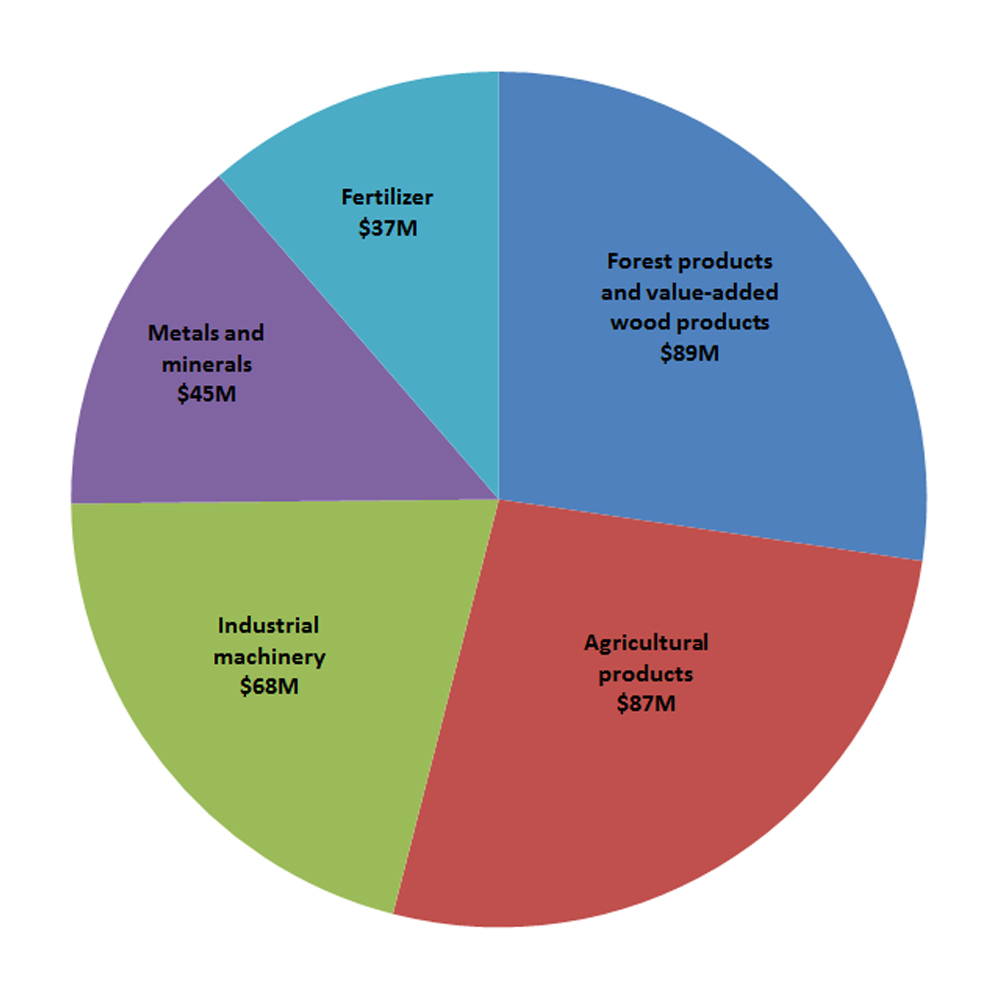CPTPP partner: New Zealand
- Canada was New Zealand’s top foreign investor in 2015 and second largest over the three-year period ending in 2016.
- Canadian companies are investing in New Zealand commercial property, agricultural farm markets, financial sector, oil and gas, information and communication technology, and retail sectors.
Canada-New Zealand trade snapshot
Top Canadian Exports to New Zealand (2015-2017 average, $CAD)

Text version
Canada's Top Exports to New Zealand (2015-2017 average, $CAD)
- Total value of exports to New Zealand: $468,000,000
- Forest products and value-added wood products: $89,000,000
- Agricultural products (including frozen pork, pet food and condiments): $87,000,000
- Industrial machinery: $68,000,000
- Metals and minerals: $45,000,000
- Fertilizer: $37,000,000
Key facts and figures
Canada-New Zealand trade
- Canadian merchandise exports: $468 million (2015-2017 average)
- Canadian merchandise imports: $684 million (2015-2017 average)
- Canadian service exports (2016): $230 million
- Canadian service imports (2016): $244 million
Canada-New Zealand tourism
- In 2016, Canada welcomed over 60,000 visitors from New Zealand.
Canada’s top merchandise imports from New Zealand (2015-2017 average)
- Agricultural products (including frozen beef, wine, frozen sheep meat): $501 million
- Industrial machinery: $55 million
- Electronic and electrical machinery and equipment: $28 million
- Medical devices and pharmaceuticals: $27 million
- Fish and seafood products: $19 million
Canada’s imports of services from New Zealand (2016)
- Travel: $157 million
- Transportation and government: $61 million
- Commercial: $26 million
Canada’s top merchandise exports to New Zealand (2015-2017 average)
- Forest products and value-added wood products: $89 million
- Agricultural products (including frozen pork, pet food and condiments): $87 million
- Industrial machinery: $68 million
- Metals and minerals: $45 million
- Fertilizer: $37 million
Canada’s exports of services to New Zealand (2016)
- Travel: $126 million
- Transportation and government: $54 million
- Commercial: $49 million
How the CPTPP helps Canada-New Zealand trade and investment
- The CPTPP strengthens the rules-based trading environment and provide enhanced market access for exporters and investors, and establishes duty-free access for trade in goods between Canada and New Zealand, eliminating tariffs for key Canadian exports, including:
- pork (tariffs of 5% will be eliminated within two years)
- prepared potatoes, including french fries (tariff of 5% were eliminated upon entry into force) and
- ice wine (tariff of 5% were eliminated upon entry into force)
- lobster (tariffs of up to 5% were eliminated upon entry into force) and
- fish fats and oils (tariffs of 5% were eliminated upon entry into force)
- sheets for veneering (tariffs up to 5% were eliminated upon entry into force);
- plywood and veneer panels (tariffs of 50% will be eliminated within seven years) and
- worked coniferous and non-coniferous wood (tariffs of up to 5% will be eliminated within seven years)
- industrial machinery (tariffs of up to 5% will be eliminated within seven years);
- chemicals and plastics (tariffs of up to 10% will be eliminated within seven years) and
- cosmetics (tariffs of up to 5% will be eliminated within seven years).
- agricultural products:
- fish and seafood products:
- forest products and value-added wood products:
- industrial products:
- The CPTPP allows Canadian companies to invest with greater confidence in New Zealand, offering them protections from unfair and discriminatory treatment, as well as greater predictability and transparency.
- Through the CPTPP, service providers also benefit from improved access commitments in key sectors, such as:
- professional services (e.g. integrated engineering, legal and urban planning, and landscape architectural services)
- environmental services
- construction services and
- other business services (e.g. management consulting and related services).
- New commitments on the temporary entry of business people make it easier for Canadian businesses to temporarily move certain categories of Canadian business people to temporarily work in New Zealand, including business visitors, installers, servicers, and intra-corporate transferees.
- The CPTPP provides enforceable provisions on labour and environment
Sectoral opportunities in New Zealand
- Clean technology:
- The cleantech sector is a driving force behind New Zealand’s transition to a low carbon economy.
- It is estimated that there is NZ$4 billion (approximately C$3.7 billion) worth of energy efficiency savings to be found in the country’s economy over the next 10 years.
- New Zealand’s new government is enacting policies to allow the country to become a net zero greenhouse gas emitter by 2050.
- It also plans to address pollution in the country’s waterway systems caused by the increase of intensive dairy farming.
- Infrastructure:
- In 2015, New Zealand launched its 30-year infrastructure plan.
- Central and local governments together are expected to spend NZ$11 billion on infrastructure annually over a 10-year period.
- The plan contains 145 initiatives that are designed to address the country’s aging infrastructure and increasing pressures from a growing population.
- The plan cuts across a variety of sectors, including rail and road transportation, housing, broadband access and water distribution.
- Information and communications technology:
- Significant development in technologies for health care, e-education, agriculture and intelligent transportation (including artificial intelligence, the internet of things, big data analytics and smart cities) present growing opportunities.
- Defence:
- In 2016, the New Zealand government unveiled a NZ$20-billion investment plan in defence force capability.
- This plan will see the military establish a new cyber support capability, bolster intelligence units and digitize the army on the battlefield, giving it network-enabled navigation and communications systems.
- It will also continue with programs to replace New Zealand's aging fleet of aircraft, which will also strengthen New Zealand's interests in Antarctica.
- Date modified: